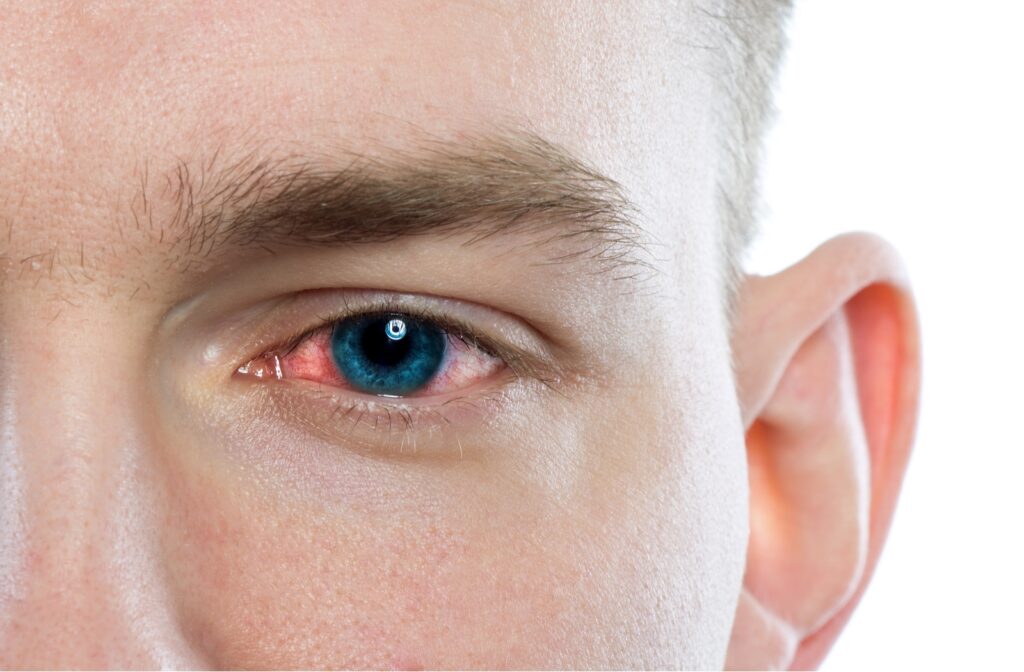Pink eye, or conjunctivitis, is a common eye condition characterized by redness, irritation, and discharge. However, these symptoms can also be indicative of various other medical conditions, leading to potential misdiagnosis. Infections, allergies, and even injuries can mimic the symptoms of pink eye. Understanding these conditions and their differences is crucial for accurate diagnosis and appropriate treatment.
Pink Eye Symptoms and Causes:
Pink ey’e can manifest differently based on its cause—whether bacterial, viral, or allergic. Common symptoms include redness, grittiness, burning, swollen eyelids, watery or discharging eyes, blurry vision, sensitivity to light, and mild pain. While pink eye is a prevalent and often benign condition, it’s essential to consider other possibilities when similar symptoms arise.
Conditions Frequently Misdiagnosed as Pink Eye:
Hordeolum (Stye):
- Location: Typically develops along the eyelashes or inside the eyelid.
- Symptoms: Painful red bump resembling a pimple, eyelid swelling.
- Differentiation: Unlike pink eye, styes are localized bumps with distinct characteristics.
Blepharitis:
- Symptoms: Eyelid swelling, dryness, foamy tears.
- Differentiation: The presence of dryness and foamy tears distinguishes blepharitis from pink eye.
Allergies:
- Symptoms: Red eyes, itching, wateriness.
- Differentiation: Allergies usually lack discharge, a common symptom in pink eye.
Dry Eyes:
- Symptoms: Dryness, stinging sensation.
- Differentiation: Dry eye is chronic, while pink ey’e typically appears suddenly.
Episcleritis:
- Symptoms: Inflammation of the episclera, redness, pain.
- Differentiation: Uncommon discharge and vision problems set episcleritis apart from pin’k eye.
Corneal Abrasions or Injuries:
- Causes: Contact injuries, foreign objects in the eye.
- Symptoms: Mild to severe pain, vision changes.
- Differentiation: Injuries may result from external factors, unlike pin’k eye.
Chalazion:
- Symptoms: Swollen, red, tender bump on the eyelid.
- Differentiation: Distinguished by the presence of a bump on the eyelid.
Scleritis:
- Symptoms: Inflammation of the sclera, redness, thick eye discharge.
- Differentiation: Thick discharge and potential impact on the jaw and other body parts set it apart.
Treatment Approaches for Different Conditions:
Each condition requires a specific approach to treatment:
Pink Eye:
- Cool compresses, artificial tears for relief.
- Antibiotic eye drops for bacterial conjunctivitis.
Stye:
- Antibiotics, warm compresses.
- Surgical drainage in severe cases.
Blepharitis:
- Antibiotics, surgery for draining bumps.
- Eye drops containing steroids.
Allergies:
- Antihistamine eye drops, oral antihistamines.
- Nasal sprays with steroids.
Dry Eyes:
- Artificial tears, immunotherapy.
- Immune system suppression through drops or plugs.
Episcleritis:
- OTC pain relievers, steroids.
- NSAIDs (oral or topical).
Corneal Abrasions:
- OTC pain relievers, artificial tears.
- Antibiotic drops for infections.
Chalazion:
- Warm compresses, steroids.
- Surgical drainage for persistent cases.
Scleritis:
- OTC pain relievers, steroids.
- Injections, oral steroids, immune system suppression.
Conclusion: Seeking Proper Diagnosis for Effective Treatment
While pink ey’e shares symptoms with various other eye conditions, accurate diagnosis is crucial for effective treatment. Visiting a doctor is essential if you experience eye discomfort or vision problems. Differentiating between conditions like styes, blepharitis, allergies, and others is vital to determine the appropriate course of action.
Understanding the unique characteristics and treatments for each condition ensures that individuals receive tailored care. From antibiotics for bacterial infections to warm compresses for styes, the treatment approach varies. In conclusion, identifying the underlying cause of eye symptoms is key to swift and effective resolution. Always consult with a healthcare professional to receive the proper diagnosis and treatment for your specific condition, ensuring optimal eye health.







